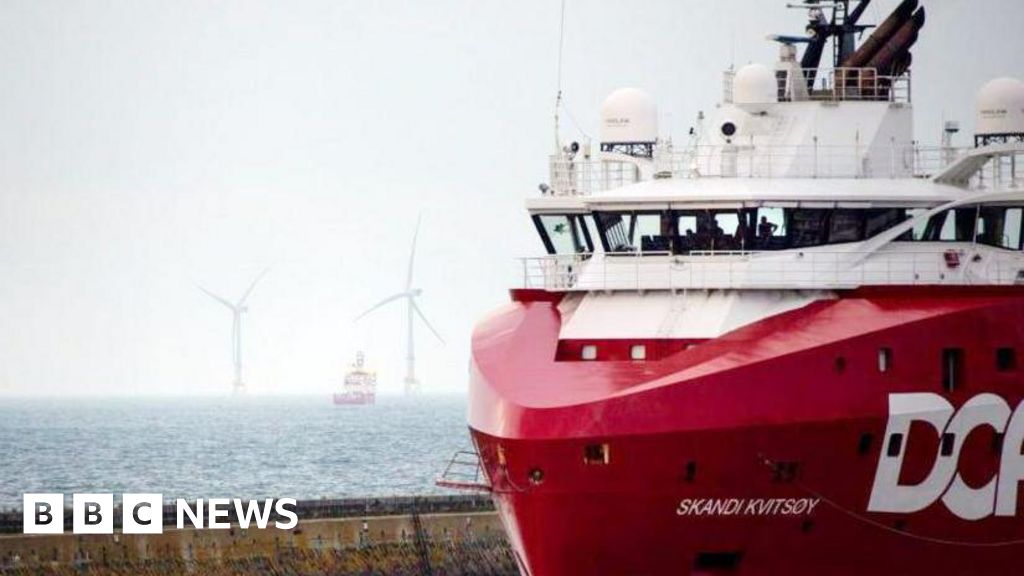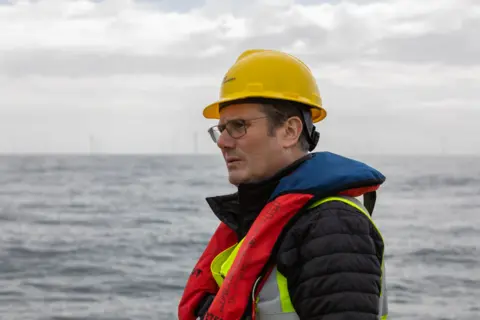Bussiness
Will oil capital Aberdeen be the new home of GB Energy?

 Getty Images
Getty ImagesGB Energy was one of the top early priorities for the new occupants of Downing Street to show they were hitting the ground running.
The legislative process is getting under way less than a month on from the election. There’s now more clarity on what the plan is meant to achieve.
But questions still remain.
One of immediate interest to Aberdonians is whether Europe’s capital of oil and gas will get the headquarters. That’s promised to somewhere in Scotland, but we don’t know where.
Aberdeen has a historic claim to be the UK’s energy centre. But is it the future? Possibly not, if the main role of an HQ is to recruit financiers with experience of doing big deals between the public and private sector on infrastructure projects.
Edinburgh might look more attractive for both its recruitment pool, and for its ability to attract financial talent from outside Scotland.
Second, Aberdeen did not elect any Labour MPs earlier this month. Its political and business representatives are lobbying hard to win the HQ, and Inverness also wants to be considered, but they don’t have local champions on government green benches.
The headquarters would be a prestige presence, but will it be that big? The Green Investment Bank was set up in Edinburgh in 2012 to do something similar in funding green energy investments with government funds allied to debt finance. It had a modest HQ, before being sold only five years later.
The HQ does not mean supply chain and manufacturing jobs. Without an agreement with the Scottish government and Crown Estate Scotland, which owns and leases the seabed around Scotland, GB Energy’s reach won’t extend north of Berwick.
Even if you assume such an agreement can be reached, much of the supply chain is already established in the east of England, where offshore wind construction is far ahead of Scotland’s.
 PA Media
PA MediaDevelopments in Scottish waters are catching up. But the Moray East wind farm, currently being constructed from a supply base in Easter Ross, has seen platforms shipped in from Tyneside, cables from Hartlepool and blades from Hull.
When will we find out where the headquarters will be? We don’t know. There could be a competition or beauty parade to spin out the process – except that Labour has been critical of the public sector cost of competitive bidding.
The more significant questions are about what value GB Energy can add to a wind energy sector that is already well developed. If it is to play a game-changing role in levering in private investment, its £8.3bn funding over five years will have a lot of heavy lifting to do.
Money is already available to the wind industry. The public sector has not been demanding more government cash, or joint investing.
What developers and private investors want from the UK and Scottish governments is the unblocking of obstacles in planning, support in building up the supply chain and reduced risk to investments.
They want clarity on guaranteed minimum prices and faster consenting to connect to the high-voltage grid.
And that requires seeing a clear path to get wind power to customers, meaning new pylons and cables in the face of local opposition. None of these appear to fall within GB Energy’s remit.
 PA Media
PA MediaSo where is value added? It sounds like Ed Miliband, the cabinet minister in charge, sees this as a means for the state to get a piece of profitable action – citing Norway, Denmark and France as countries that have big, profitable energy firms.
Where value could be added less profitably but in place of private sector shortcomings is in its remit for supporting local and community schemes for renewable power. The Scottish Renewables trade body said support for local and smaller energy schemes is a big improvement, “having suffered greatly from a lack of policy and investment support for some time”.
It could also support technologies that are yet to become commercially viable and attractive. Green hydrogen is one such prospect.
GB Energy could help take the first, riskier steps to establish production at scale and distribution networks, giving industry and hauliers confidence to invest in hydrogen-powered equipment.
To meet its net zero targets, the aviation industry needs to kick-start production of biofuels known as SAF or Sustainable Aviation Fuel. That could use public funds to build up refining capacity.
Tidal power is getting closer to commercial viability, given the right price guarantees: wave power is further from market.
And there’s Carbon Capture and Storage (CCS). While gas and oil will still be burned, emissions can be captured and pumped deep under the North and Irish seas. But that still hasn’t reached commercial viability.
Around £20bn has been half-promised by the UK Treasury to help get the private sector investing in the necessary equipment and pipelines.
The National Audit Office reported this week on progress so far. It’s not reassuring.
It identifies numerous risks to the projects, immensely complex negotiations with the private sector, and says the earliest projects are behind schedule.
It also points out that CCS is essential to reaching targets for net zero, and if that doesn’t work as planned, there is no alternative route.











